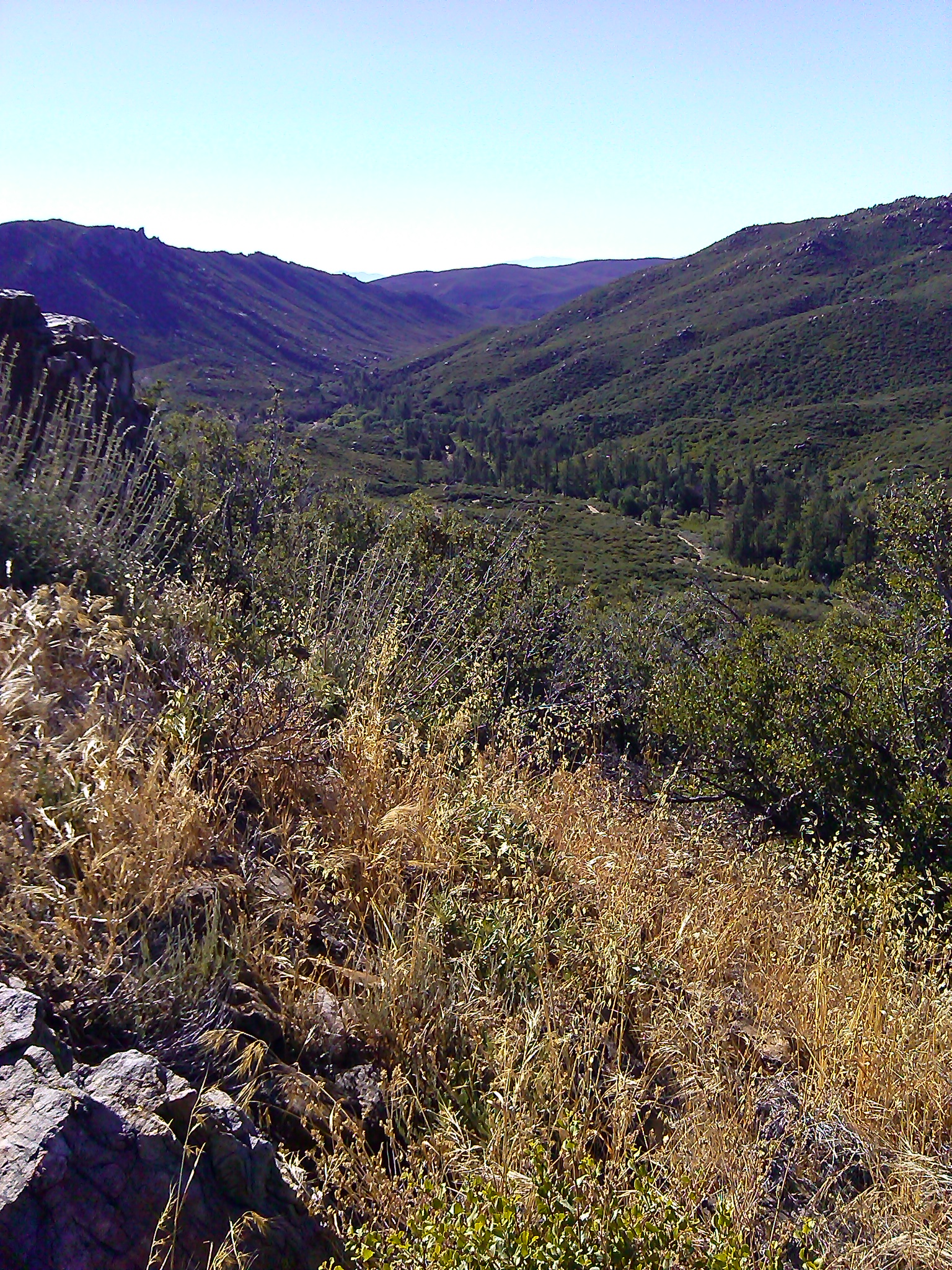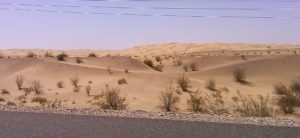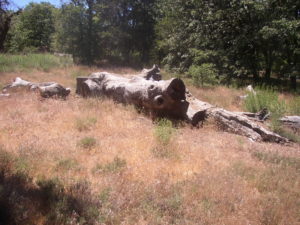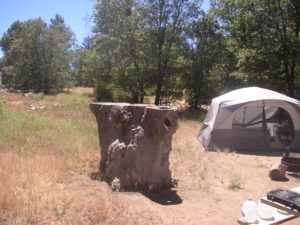First Stop: Across the Desert to a Forest Near San Diego

The Big Adventure Part I — 3,000 Miles Round Trip in 26 Days!
The night before we left, while packing I wondered: Did we really bring enough stuff for a month–clothes, medical supplies, food, dog care items, etc. But the morning when we were getting ready to leave, we could just barely fit it all in the SUV and rooftop carrier. We were to soon learn that we took much more of certain items, clothes and food in particular, than we needed. Including canned goods and freeze dried food packages, we probably had enough for a two-month adventure. The problem is that at every stop, we had to unpack the rooftop carrier and the back of the SUV, and carry it into the tent or the camp. On the next trip we will be more careful about what we bring. Packing and unpacking on a 10-stop camping adventure turned out to be a lot of work.
The rooftop carrier is a soft rubber one rather than the hard carriers you often see. The advantage of this one, a Rightline model, is that it conforms to the items you pack; it can be taller or thinner depending on the height of your suitcases and other items.
The disadvantage is the difficulty of zipping it when you have loaded everything up there. The black rubber is also very hot. When we got back to Phoenix, I had to douse it with cool water so I wouldn’t burn my hands trying to open it up and unpack.
So, we were off to the first leg of our journey, Burnt Rancheria Campground in the Cleveland National Forest near San Diego. It was a blisteringly hot day going across the desert on Interstate 8. There were some interesting features along the way, though, such as sand dunes.
We soon faced our first big challenge of the trip: the air conditioner in the car stopped cooling. As the temperature rose, we found that if we turned it off for a while, then back on, it seemed to work at least partially. But then we faced the second challenge, our gas mileage plummeted, for reasons we still are not sure about. With the air conditioner turned off, mileage returned to normal. Luckily, most of the trip would be up the relatively cool coastline of California and Oregon. On the return trip, we didn’t get that hot until we neared Los Angeles, traveling on Interstate 5.
We had reserved spaces in mostly National Forest campgrounds rather than state forests or parks. National Forests are generally less expensive. This required us, the first day, to go up a scary and winding road to the campground. What really made it difficult was that we were tired of driving by that point and the winding road was even more of a challenge as a result.
The campground was lovely, with clean bathrooms that had sinks and flush toilets. I’ve blogged before about my disdain for “vault” or “pit” style toilets. The toilets in this camp had a sort of prison look to them, stainless steel.
A short walk on a hiking trail yielded breathtaking views of the nearby mountains and vegetation.
Early on our journey we discovered a flaw in our planning: you really need to stay at least 3 or 4 nights at each camp, given the stress of driving up the mountain and unpacking everything. If you have to pack up and go back down the mountain two days later, it can be exhausting, over the course of a three week trip like we had.
At Burnt Rancheria I got some good pictures of felled trees that looked a bit like dinosaur bones.
What is a CAMP HOST? At every campground in a National Forest we visited, there were one or more people called the Camp Host(s). They are usually located near the entrance to the campground, often living in a motor home or Fifth Wheel that is parked. It’s a good idea to try to meet them when you first arrive and set up camp. Their job is to collect camping fees from visitors and be available to answer any questions about the camp. Sometimes they are responsible for keeping the restrooms clean as well.
They are of various ages and backgrounds but they all have one thing in common: They are true characters. As writer, I enjoyed talking with them. They all have interesting stories to tell, not just about the campground but about their lives. Their job has fun aspects: they get to live in the beautiful forest. But they also have to be available all day and well into the evening.






